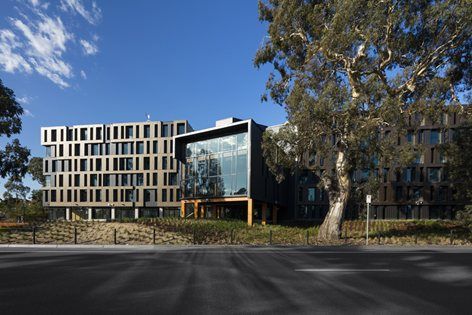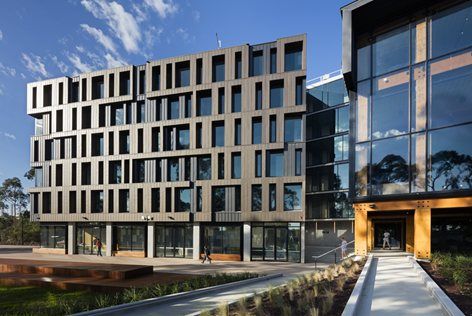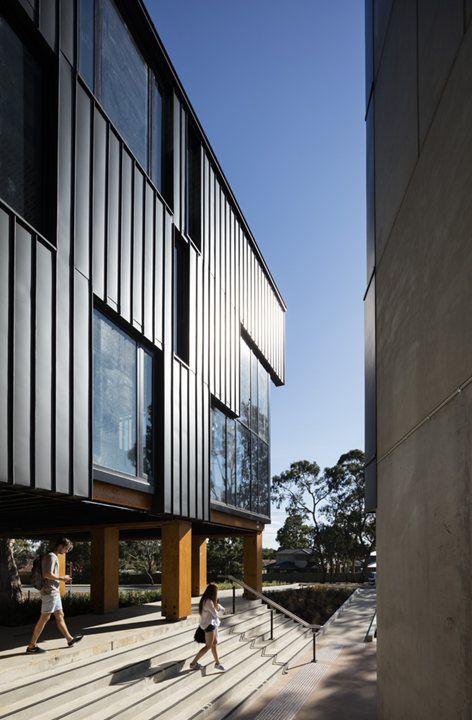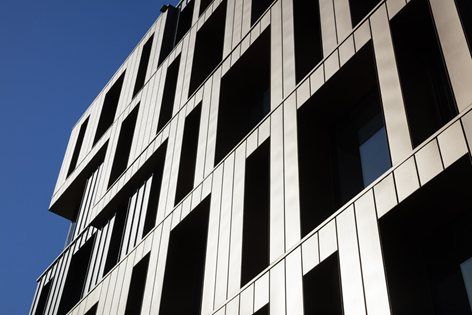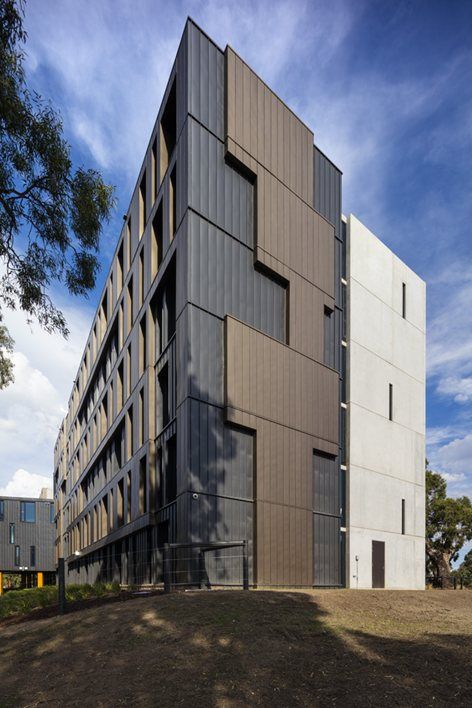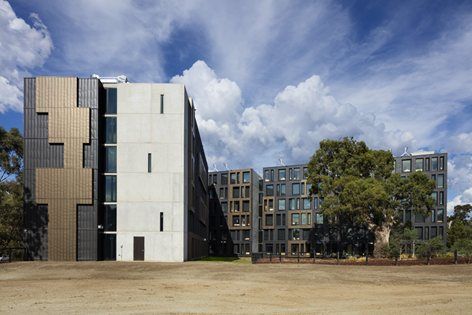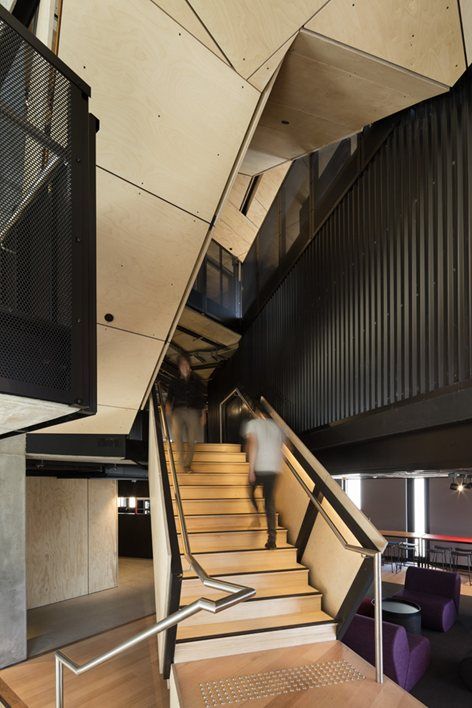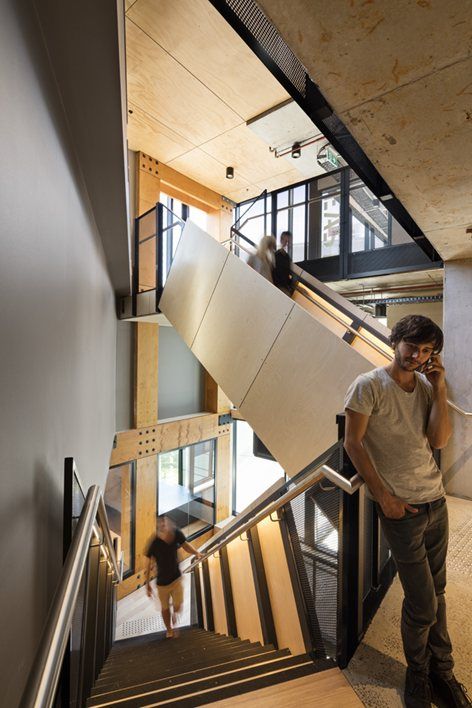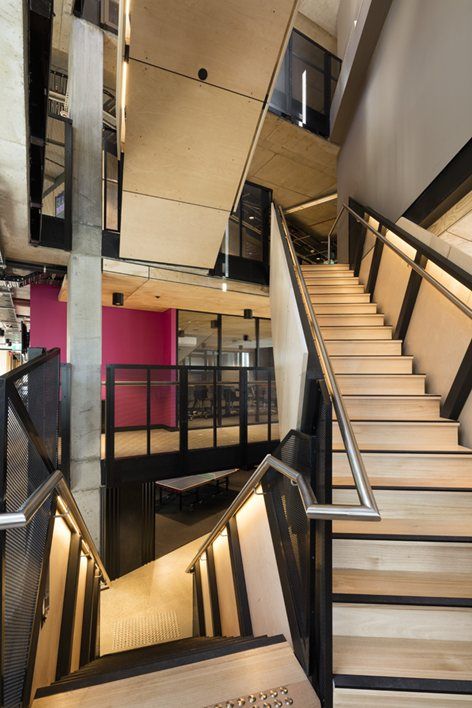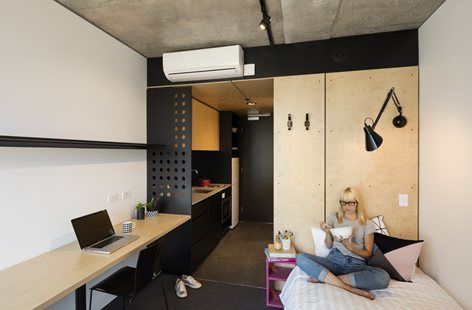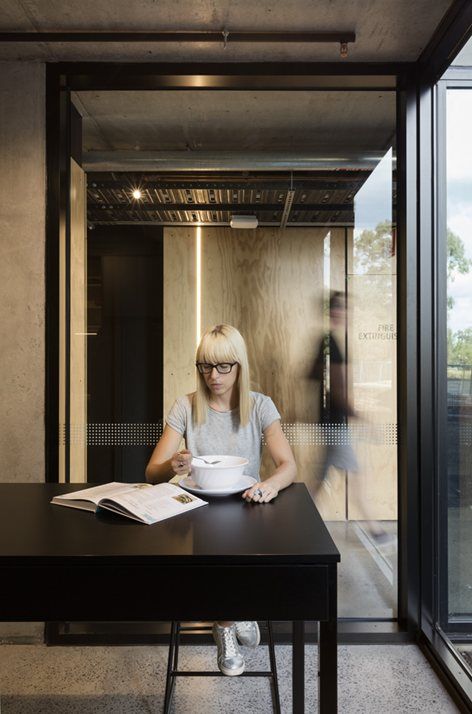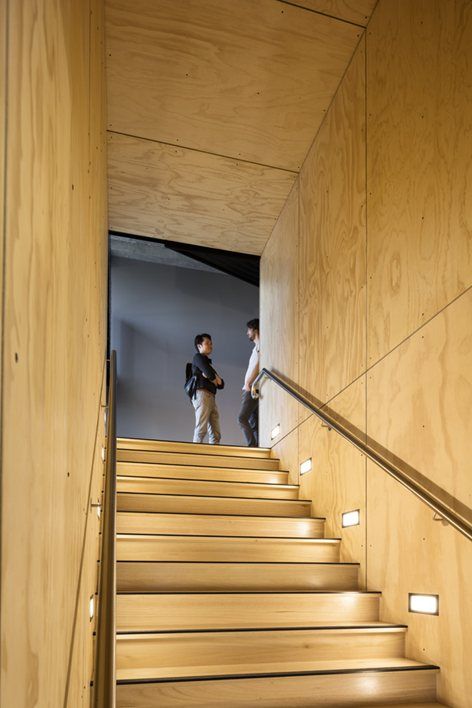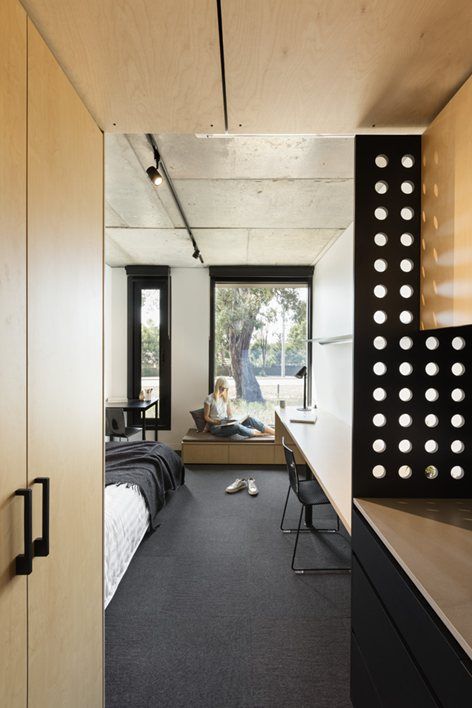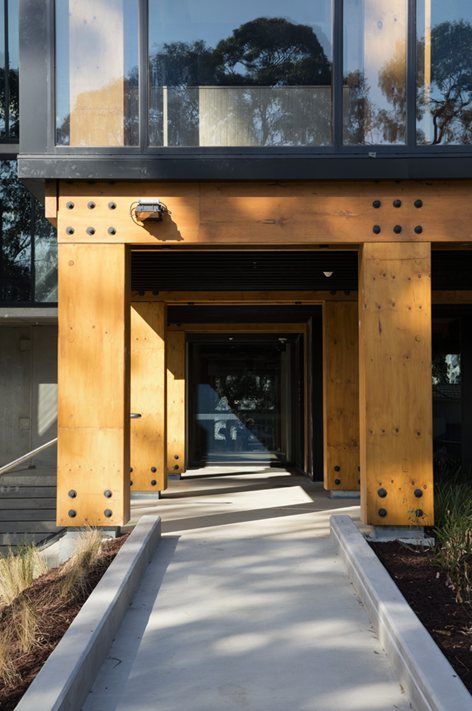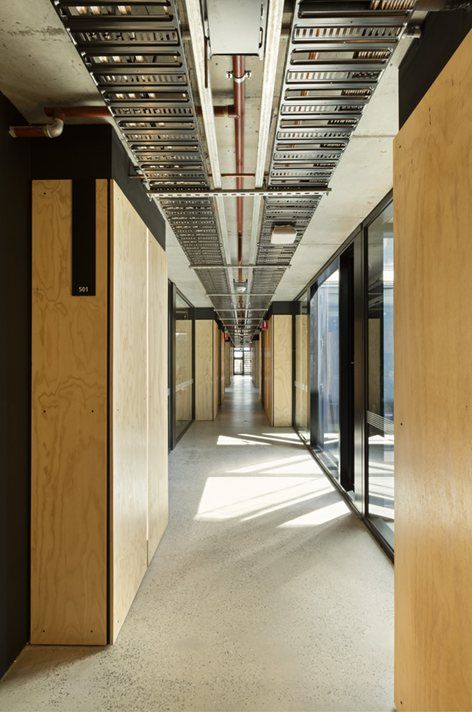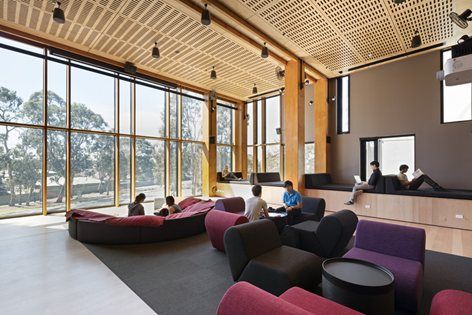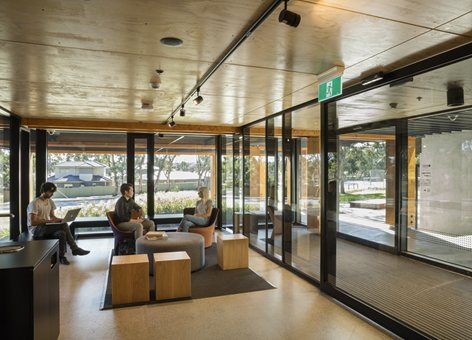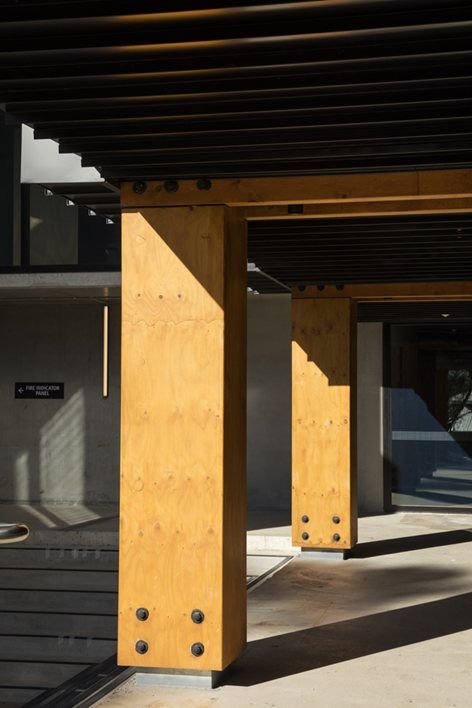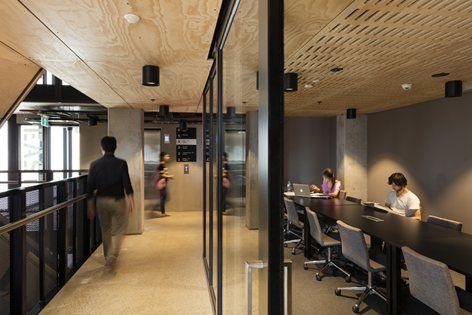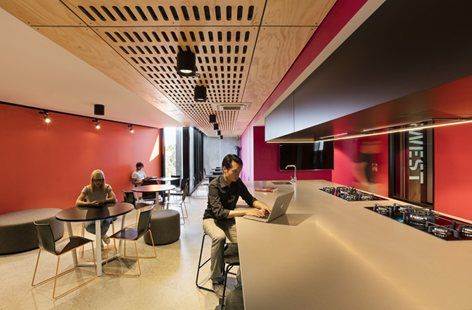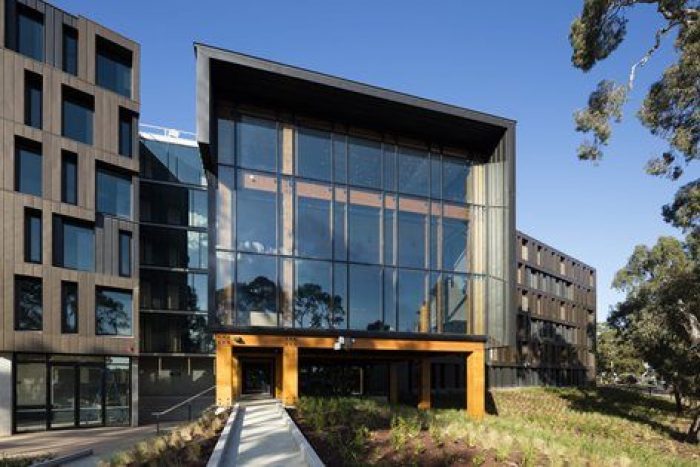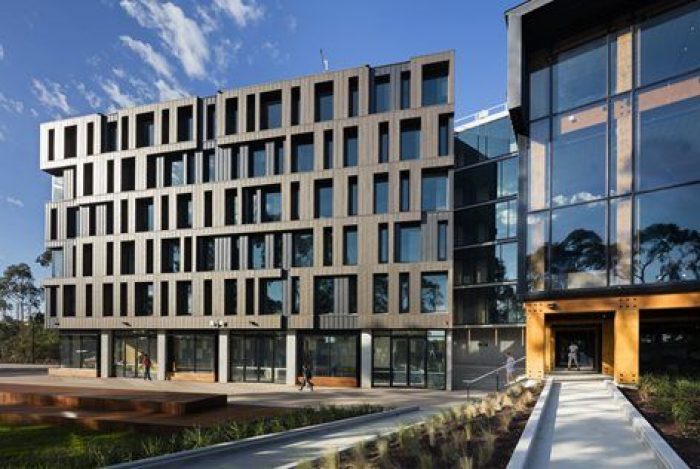Situated within an Aboriginal heritage site on Clements Drive at its Bundoora West Campus, Walert House or BWSA (Bundoora West Student Accommodation) is RMIT University‘s foray into on-campus student housing. Richard Middleton Architects (RMA) was engaged by RMIT to design halls of residence that would offer the best possible model for on-campus living within an increasingly competitive setting.
RMA worked intensively with RMIT, and also the building’s operator, Unilodge, to ensure that its residents would live within halls that offer the most supportive community possible thus, the functions of university life were to be incorporated within this building at its core.
This gave rise to the idea of a multi-purpose hub at the intersection of the building’s three wings. This hub would be themed and zoned, progressing from larger gathering spaces on the lower levels to quieter communal spaces on the upper. These spaces would serve a variety of functions, from bookable rooms to a TED space, but also encourage residents to move between each level via a winding open stairwell encouraging their serendipitous interaction.
With a large grassed forecourt before it, this hub activates the northern campus entrance on its corner with McKimmies Road. It’s extensively glazed to offer views to the landscape and advertise an active series of spaces that draw its residents from their rooms to study and interact.
This ‘nexus’ is framed by a six-level LVL (laminated veneer lumber) structure. An intentional exercise in demonstrating the possibilities of timber in multi-residential/commercial applications whilst inevitably adding to the warmth and tactility of the communal spaces.
BWSA offers apartment types that are unique to the market ranging from low cost communal and single occupancy living to larger apartments suited for couples. Its entire southern wing consists of Quad apartments that each contain 4 bedrooms and two ensuite bathrooms. From Level 1 to Level 3 the east and west wings consist of 18sqm SOUs whilst the levels above offer incrementally larger SOUs at 27 and 36sqm, catering to a post-graduate market.
Although built conventionally, the only modular components of the shell being its lightweight facade, the apartments are designed on a grid that allows for services to utilise common risers which flank each corridor and ventilate to the roof. Each corridor is glazed at its end with actuated windows drawing cool outside air via thermal chimneys at the inners ends of the east and west corridors. Additionally, the south wing is naturally ventilated and the hub has actuated windows assisting cross ventilation throughout.
The Walert House building’s simplistic plan, a skewed cross, is the result of its placement amongst the ancient redgums that surround it within this culturally significant site. Some of these trees are Keelbundoora Scarred Trees which have been named after a Wurundjeri clan ancestor.
This skewed placement avoids direct solar orientation, with each of its 372 bedrooms designed to encourage its occupants to study at large operable windows, offering views across the landscape. Its folded zinc and bronze facade provides deep reveals whilst minimum standards of lighting and natural ventilation are exceeded to the benefit of its thriving student community.
Project Info:
Architects: Richard Middleton Architects
Location: Melbourne, Australia
Area: 11,000 m2
Project Year: 2016
Photographs: Dianna Snape
Project Name: Walert House
